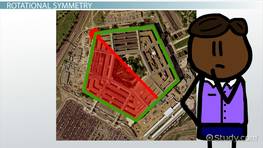Explore Architecture
Table of contents
Architecture Courses and Lessons
This collection of architecture courses introduces students to the foundations of architectural forms and architecture design.
Explore our full library of architecture courses:
What is Architecture?
The definition of architecture is the art and design of creating buildings and other structures. Architecture combines both aesthetic and utilitarian considerations. Buildings and other structures are designed to fulfill a purpose and communicate meaning. Building architecture can often reveal much about a society's relationship to the environment, history, and the priorities of the people who live, work, or worship in the space. Each work of architecture must take into account the intended use of the building, the construction of the structure, and the ideas that it communicates.
Society or the people who will use the building determine what the goal of a building should be. The demand for a structure comes first. Architectural design then takes that goal and attempts to meet it in the best way possible. For example, there are domestic buildings designed for use by a family to live and work, places devoted to religious practices and worship, government buildings, recreational spaces such as athletic stadiums, educational spaces such as schools and museums, and buildings dedicated to commerce. Each of these types of structures has different requirements and needs.
Architecture is related to art. A major difference is that unlike other works of visual and performing art, which are sometimes created for their own sake as a work of beauty or social statement, architectural structures must always have a utilitarian purpose. However, works of art can often be incorporated into building design, and a great deal of design skill goes into creating attractive and functional buildings. Architecture also reflects and helps define specific periods in cultural histories, such as Gothic, Victorian, Art Deco, and Neoclassical.




